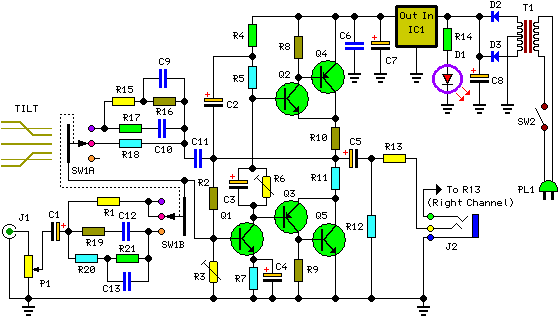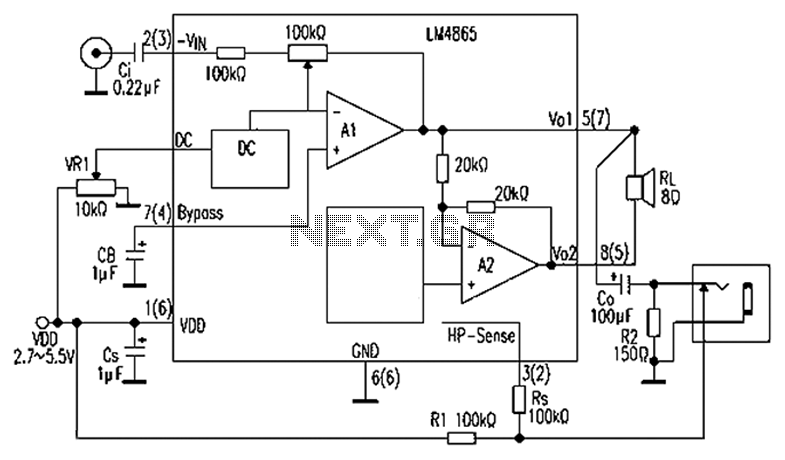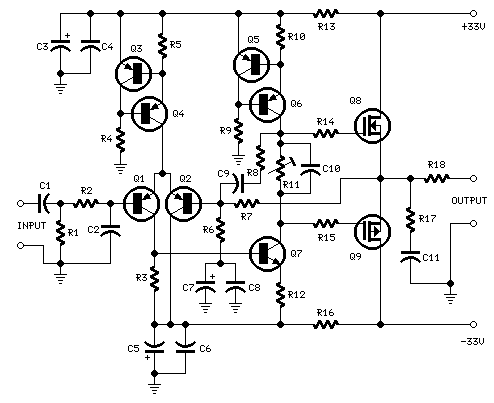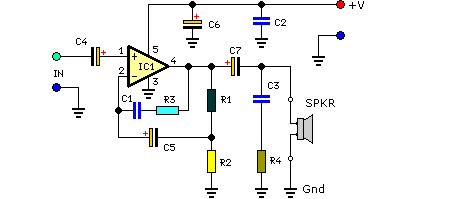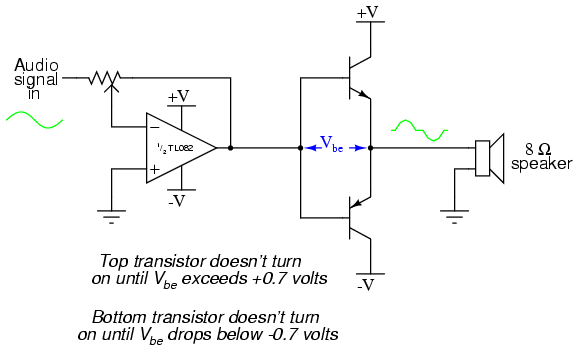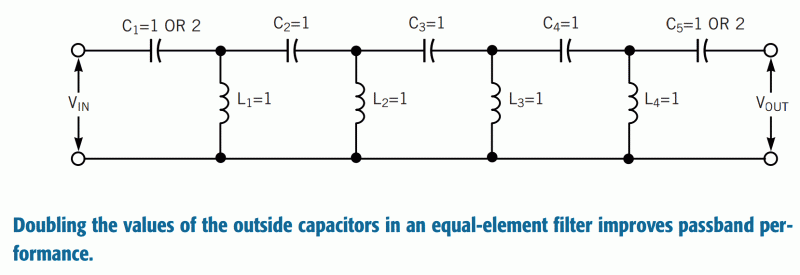
Use upC1663 broadband amplifier
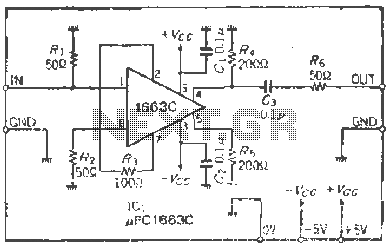
The PCI663 is a dynamic input, differential output type of integrated circuit (IC), but this circuit is designed with a single-ended output. The terminal resistance is set at 50 ohms, with a straight coupling configuration. The output voltage is approximately in phase at 3V, necessitating the use of a capacitor for AC coupling in the line. When using a single-ended output with differential output terminals, it is important to avoid open-circuit conditions as this will alter the circuit characteristics. To achieve balance, a resistor is connected in the circuit. The gain is determined by a differential input differential transistor emitter resistor, Rs. A short circuit configuration yields a gain of approximately 300 times with a load of 100 ohms, and 100 times with a load of 1.2k ohms. A variable resistor of 1k ohm can be used to adjust the gain, allowing for changes to the closed-loop gain without affecting the frequency characteristics of the circuit, which is superior to that of a standard operational amplifier.
The PCI663 integrated circuit functions primarily as a differential amplifier, designed to convert a differential input signal into a single-ended output while maintaining high fidelity. The circuit topology employs a resistor network to balance the input and output stages, ensuring that the signal integrity is preserved.
The terminal resistance of 50 ohms is critical for impedance matching, minimizing reflections and maximizing power transfer in high-frequency applications. The use of straight coupling further enhances signal transmission by reducing potential losses associated with more complex coupling methods.
The output voltage being in phase at approximately 3V indicates that the circuit is optimized for applications requiring a stable output reference. The inclusion of a coupling capacitor is essential for AC applications, as it blocks any DC offset that may be present in the signal, allowing only the AC component to pass through.
In configurations where single-ended outputs are utilized with differential terminals, maintaining circuit stability is crucial. The introduction of a balancing resistor mitigates the risks associated with open-circuit conditions, which can lead to unpredictable behavior and distortion of the output signal.
The gain characteristics of the circuit are adjustable through the selection of the emitter resistor, Rs. The noted gains of 300 times and 100 times at specific load conditions illustrate the circuit's flexibility in amplification. The ability to incorporate a variable resistor allows for fine-tuning of the gain, which is particularly advantageous in applications requiring precise signal amplification.
Overall, this circuit design demonstrates a high level of performance, offering superior frequency characteristics compared to traditional operational amplifiers. This makes it suitable for a variety of applications in signal processing, where both gain control and signal integrity are paramount.j1PCI663 shame dynamic is input, differential output type of IC, but this circuit has a single-ended output, input terminal resistance chu l (50Q), comb straight coupling. Because the output voltage is approximately the same phase 3V, it is necessary to use a capacitor c: aiE line AC coupling. When using single-ended output differential output terminals If not using open-circuit, the characteristics will change, so this circuit is connected to the resistance fart 'ugly chu, in order to achieve balance.
Magnification is connected by a differential input differential transistor emitter resistor Rs. OK, short circuit, which is about 300 times when looQ}} 1.2kQ 100 times when 20 times. If lkQ variable resistor, you can arbitrarily change the magnification. That is the change to the closed-loop magnification, it will not change the frequency characteristics of the circuit which is superior to ordinary OP amplifier place.
The PCI663 integrated circuit functions primarily as a differential amplifier, designed to convert a differential input signal into a single-ended output while maintaining high fidelity. The circuit topology employs a resistor network to balance the input and output stages, ensuring that the signal integrity is preserved.
The terminal resistance of 50 ohms is critical for impedance matching, minimizing reflections and maximizing power transfer in high-frequency applications. The use of straight coupling further enhances signal transmission by reducing potential losses associated with more complex coupling methods.
The output voltage being in phase at approximately 3V indicates that the circuit is optimized for applications requiring a stable output reference. The inclusion of a coupling capacitor is essential for AC applications, as it blocks any DC offset that may be present in the signal, allowing only the AC component to pass through.
In configurations where single-ended outputs are utilized with differential terminals, maintaining circuit stability is crucial. The introduction of a balancing resistor mitigates the risks associated with open-circuit conditions, which can lead to unpredictable behavior and distortion of the output signal.
The gain characteristics of the circuit are adjustable through the selection of the emitter resistor, Rs. The noted gains of 300 times and 100 times at specific load conditions illustrate the circuit's flexibility in amplification. The ability to incorporate a variable resistor allows for fine-tuning of the gain, which is particularly advantageous in applications requiring precise signal amplification.
Overall, this circuit design demonstrates a high level of performance, offering superior frequency characteristics compared to traditional operational amplifiers. This makes it suitable for a variety of applications in signal processing, where both gain control and signal integrity are paramount.j1PCI663 shame dynamic is input, differential output type of IC, but this circuit has a single-ended output, input terminal resistance chu l (50Q), comb straight coupling. Because the output voltage is approximately the same phase 3V, it is necessary to use a capacitor c: aiE line AC coupling. When using single-ended output differential output terminals If not using open-circuit, the characteristics will change, so this circuit is connected to the resistance fart 'ugly chu, in order to achieve balance.
Magnification is connected by a differential input differential transistor emitter resistor Rs. OK, short circuit, which is about 300 times when looQ}} 1.2kQ 100 times when 20 times. If lkQ variable resistor, you can arbitrarily change the magnification. That is the change to the closed-loop magnification, it will not change the frequency characteristics of the circuit which is superior to ordinary OP amplifier place.
Warning: include(partials/cookie-banner.php): Failed to open stream: Permission denied in /var/www/html/nextgr/view-circuit.php on line 713
Warning: include(): Failed opening 'partials/cookie-banner.php' for inclusion (include_path='.:/usr/share/php') in /var/www/html/nextgr/view-circuit.php on line 713
